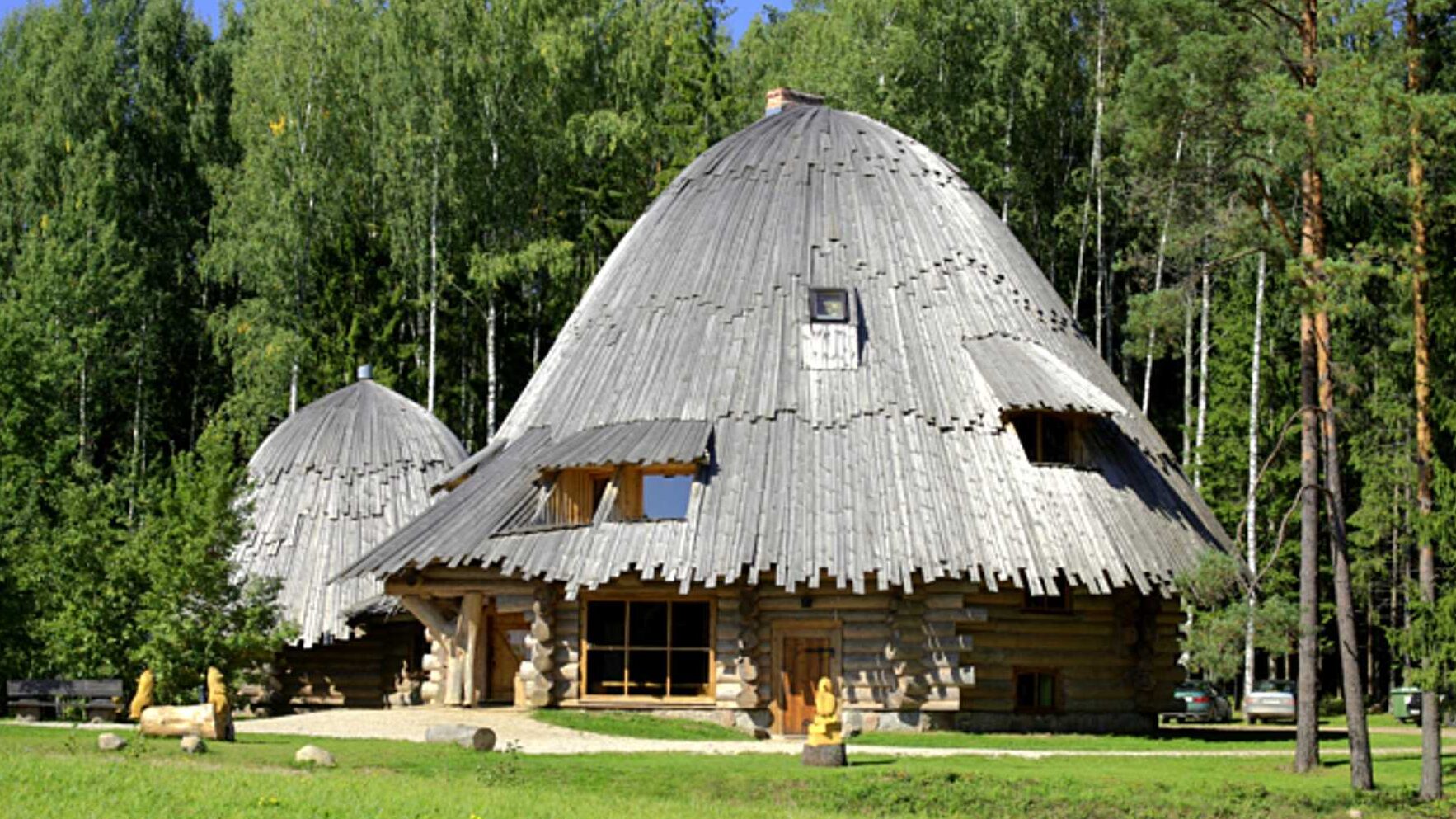On a typical day, several dozen tourists line up in an orderly queue to put on a scarf and pretend to push a trolley like Harry Potter, through the brick wall divide that separates the muggle universe and the steam train to Hogwarts. It's a sliver of literature we can actually touch because it captured many people's imaginations.
In Estonia, consider Pokumaa (“Poku Land”) in the small town of Urvaste, nestled between Võru county and Põlva county. This theme park was opened in 2008, two years after the passing of Edgar Valter, the author of Pokuraamat (“The Poku Book”) and its two sequels, on which the park is based. 14 years after the book's publication, fans were able to see it in physical form. The creatures of his story, the pokud, are based on the grassy tussock sedge plants (carex stricta) that were all around him in Padasoomäe, the land he inhabited in the last years of life. Albeit, the characters look like tussock sedges in their later stages, when the marshland foliage is dry, shrively, and droopy. Like King's Cross prompted part of a story and then came out the other end in an augmented shape, the marshes of southeast Estonia were assigned new meaning. And Puuko, friend of the pokud, looks suspiciously like Edgar Valter himself.
At Pokumaa, the grounds of Padasoomäe are one with the story's surroundings. Upon parking your car, a trail walk leads you along to the peaceful patch of land. There are farm buildings constructed in the vernacular style, farm animals, a smoke sauna, huts plucked right out of Valter's imagination, and paths that trace around the theme park.
When visitors in the summer and spring weekends have had enough of walking, looking at original illustrations from the book, character sculptures, paintings, and other objects from the author's life, they can get pankoogid (“pancakes”) with different toppings and make their own poku as a craft souvenir. On occasion, live theatre and music shows take place at Pokumaa, with the apple orchard becoming one such stage.
In exchange for characters with dry, grassy hair, many Canadians are more familiar with a young girl with red braids and a straw hat — Anne Shirley. Her adopted home, Green Gables, is a perpetual draw for tourists to Prince Edward Island. Lucy Maude Montgomery, the author of Anne of Green Gables, created an immediately commercially successful book. The love of the land is a theme in these books as well, and the exuberance of Anne's character struck a chord with readers back in 1908 as it does today, luring curious fans from the beginning.
Green Gables Heritage Place in PEI receives visitors from far and wide, who want to see the woodlands that Anne explores in the books. Many come from Japan and South Korea, where the books are notably popular. Just as North Americans may be transfixed with how different the traditions and heritage are in Japan and South Korea, the reverse is true.
In the vicinity, the Haunted Wood Trail leads visitors to the cemetery where L.M. Montgomery is buried. For all that she wrote about this physical place, she was unable to spend much time here in her adult life. What's now Green Gables wasn't actually her own home. According to the Heritage Place, “this farm was the home of David Jr. and Margaret Macneill, who were cousins of Montgomery's grandfather. The farm was first settled in 1831…Although L.M. Montgomery never lived here, she grew up nearby with her grandparents.” While this property belonged to L.M. Montgomery, it became a place forever touched by her fiction.
L.M. Montgomery lived with her husband in what's now the Uxbridge, Ontario area, when he was called to work there as a minister. Incidentally, it's still possible to take a tour of this residence, to learn about her life and books. Among other points, the tour sheds light on how writing was a practice of solace for her, transporting her back to the island. And, as the Heritage Site has explained, the house and grounds at Green Gables were restored to what kind of house Anne would have lived in.
When we think of the world's most prominent theme parks, we may picture Universal Studios or Disney World. The latter, with ground breaking in 1965 and completion in 1971, has witnessed so much activity and growth that it's effectively like its own city.
Though Pokumaa and Green Gables may be humble in comparison, and they really make the most sense to those who are familiar with the stories, they have similar immersive qualities that readers find in reading and re-reading the books. These places are reflective of fiction's basis in reality and its ability to bend that reality.
This article was written by Vincent Teetsov as part of the Local Journalism Initiative.




